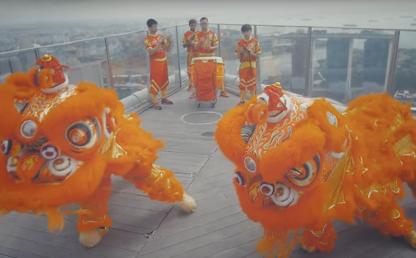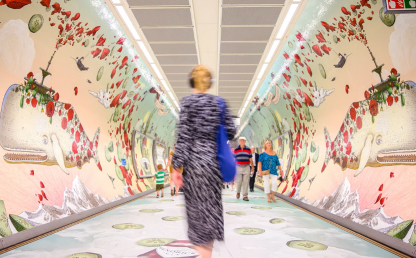Retail in Asia. Our top trends to watch...

According to Jing Daily "Retailers need to focus on providing the status of feeling instead of the status of buying.” And we completely agree. With online claiming 35% of retail sales in China, brick and mortar stores need to do all they can to entice shoppers. Where online allows buyers to flit from brand to brand hunting for offers, retail stores can offer a unique opportunity. An opportunity to capture the loyalty of a consumer by providing them with a new, memorable and unique experience which has them coming back from more than just your product.
We have identified four trends which the leaders in retail in China are deploying to help them lure buyers from their laptops.
- Omnichannel or “new retail” - The seamless integration of all marketing channels both online & offline.
With 37% of Chinese customers shopping from their smartphones, instead of trying to break that habit, incorporate it into your store experience to increase sales. The leader in this has got to be Alibaba who actually coined a new term ‘new retail.’ Alibaba sees its aim, not as “the total domination of e-commerce, rather, the complete digitisation of all commerce.”
2. Technology powered stores
Brands have a wealth of technology at their finger tips to make the shopping experience more enjoyable & ultimately lucrative if executed right. This retail extravaganza from SKII shows how technology can enhance a shoppers experience.
SKII future smart store in Shanghai, an Aladdin's cave of technology to excite shoppers. They have it all: AI to try on makeup, digital walls which read your facial expression to create art & a smart booth to scan your skin.
All this technology has made the experience more exciting & ultimately easier for the consumer to explore the product ranges available & choose what suits them best.
3. Experience stores
An “experience” is nothing new to retail, but in the last few years the word has taken on a whole new meaning.... Our top 3 are:
- Art gallery style stores
- Stores which aren’t stores
- Gamification
These case studies show you how it's done right...
Art stores from Gentle Monster. Whose artistic window displays pull you into a labyrinth of storytelling art instillations. Consumers are immersed in the thought behind the collections, absorbing the concepts without realising they are subtly being sold sunglasses which are woven into instillations. Best of all this type of store is the ultimate insta friendly experience.
Stores which aren’t 'stores' such as the Tiffany Blue box cafe. This trend sees brands create experiences for consumers which, from the outside seem to have nothing to do with their products. But really they are immersing consumers in their brand and thus subtlety selling the brand.
This methodology has been around for a while, with Under Armour leading the way back in 2013 with a branded theatre. “Wherever we go around the globe, we will lead first with our story and bring the people into the best Under Armour experience possible before we ask them to try our performance apparel and footwear,” said founder and CEO Kevin Plank.
“We believe in the power of storytelling and our ability to tell provocative and relevant stories will serve as a catalyst for our international growth. For many athletes in China, this will be their introduction to our brand,” he added.
For the trend of gamification we can look to the luxury giant Chanel, who’s pop up concepts are legendary. The Coco Game center which toured Asia brought crowds in their thousands. “According to media site Jiemian, China’s arcade-game retail industry experienced a boom in the year 2017. In 2017, the number of claw machines in China reached 2 million, making up a 60 billion RMB (around 8.7 billion USD) market.” JING DAILY.
Smart luxury brands have recognised this and are tapping into the phenomenon.
4. Design & architecture
Similar to the ‘art store’ concept retail outlets are looking at their design and architecture, creating spaces which you would not typically see as retail stores. Clean lines, textured walls & dramatic colours lead customers around the store in a tailored way.
Leading the way is cosmetics company Harmay. When Chinese beauty was mainly focused on e-commerce Harmay started to invest heavily on their in-store experience. They are now rated as the number one retail store in the city on China’s popular experience-rating app Dazhongdianping and social media and e-commerce platform Xiaohongshu.
What do all these trends have in common? They are creating an experience which you cannot access just through online shopping. Thus making physical stores a must destination.
Don't forget what works for one brand won't necessarily work for the next. It is key to adapt ideas & tailor them for your customers.
Inspired? Get in touch if you want to bounce some ideas around.
 Insights
Insights

